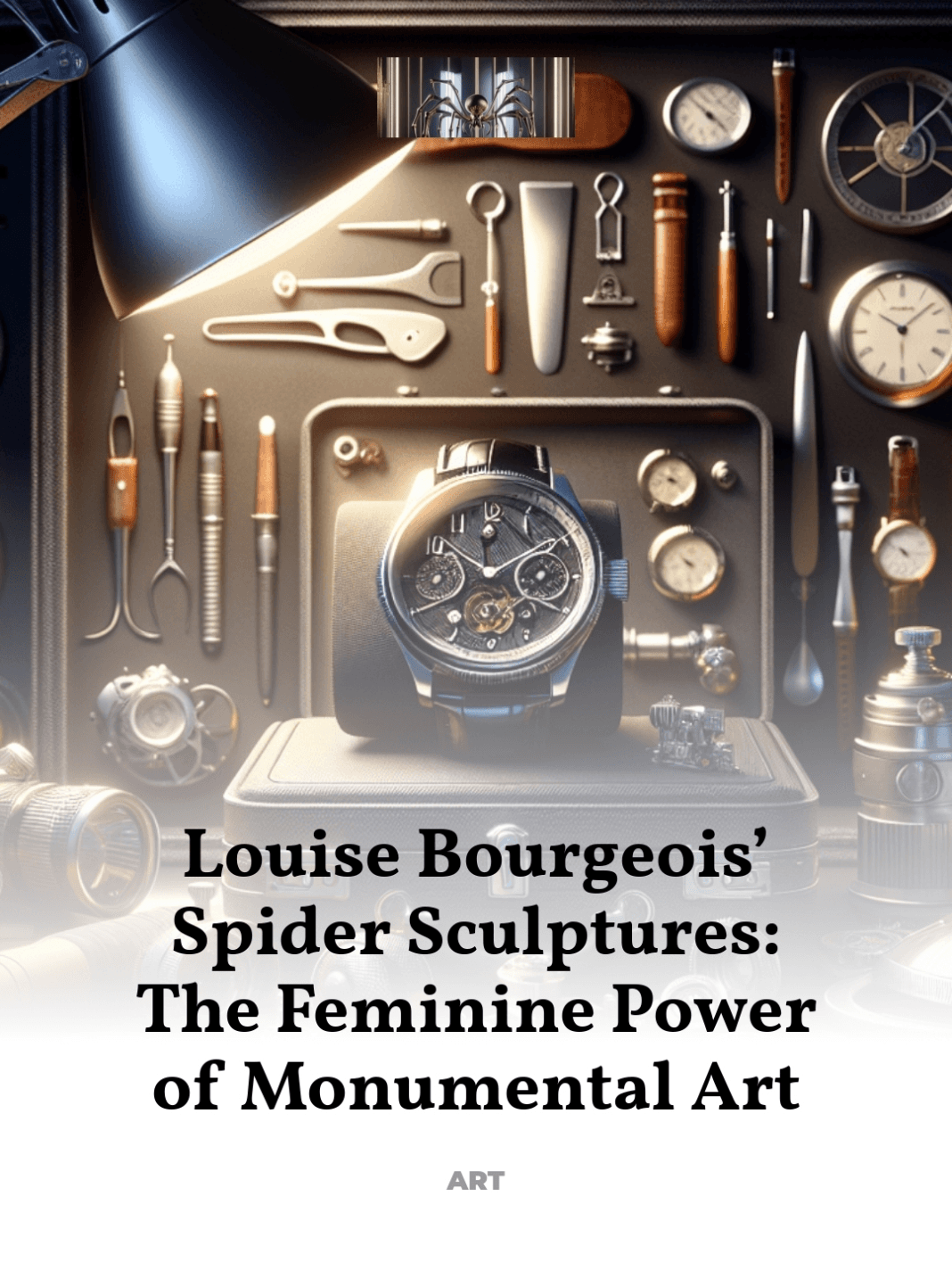Why her giant arachnids are among the most sought-after contemporary pieces
Louise Bourgeois’ towering spider sculptures, known as ‘Maman’, stand as a profound statement of feminine strength, vulnerability, and complexity. These monumental artworks are not only striking in their physical presence but also rich in symbolic meaning, weaving together themes of motherhood, protection, and the artist’s own personal history.
- The Enigmatic Background of Louise Bourgeois
- Symbolism and Inspiration Behind the Spiders
- The Craftsmanship of Creating Giants
- Cultural Impact and Reception
- The Collectibility of Bourgeois’ Spiders
- Preserving the Legacy: Exhibitions and Influence
The Enigmatic Background of Louise Bourgeois
Louise Bourgeois was born in Paris in 1911 and moved to New York City in 1938, where she lived and worked until her death in 2010. Her career spanned over seven decades, during which she created a diverse body of work that includes not only sculpture but also painting and printmaking. However, it is her monumental spider sculptures that captured the public’s imagination and came to define her legacy.
Bourgeois’ work is deeply autobiographical, drawing from her childhood memories and her experiences of anxiety and trauma. The spider motif first appeared in her drawings in the 1940s but reached its full expression in the 1990s with the creation of ‘Maman’. This sculpture, standing over 30 feet tall, is a tribute to her mother, who was a weaver—a recurring theme in Bourgeois’ work that symbolizes repair and protection.
Symbolism and Inspiration Behind the Louise Bourgeois’ Spider
The spider, a creature that can evoke fear and admiration, is a powerful symbol in Bourgeois’ art. It represents both strength and fragility, embodying the complexities of human relationships. Bourgeois described the spider as “an ode to my mother,” praising her intelligence, patience, cleanliness, and usefulness. Spiders, which are natural engineers, serve as a metaphor for creativity and the maternal role as both protector and predator.
The choice of the spider also reflects Bourgeois’ interest in the psychological aspects of the human experience. She often explored themes of loneliness, jealousy, and fear of abandonment in her work. The spider—solitary and often misunderstood—mirrors these feelings.
The Craftsmanship of Creating Giants
Creating these towering sculptures is a feat of engineering and artistry. Bourgeois worked closely with a team of skilled fabricators to bring her visions to life. The sculptures are made of bronze, stainless steel, and marble, materials that are both strong and enduring yet capable of conveying the delicate details of the spider’s form.
The process begins with small maquettes, which Bourgeois meticulously shaped from various materials, including tape, wood, and fabric. These maquettes were then scaled up and cast in bronze, a material choice that enhances the spider’s imposing presence and permanence. The surface of each sculpture is carefully treated to create textures that mimic the natural appearance of a spider’s body, adding a tactile quality that invites viewers to engage with the work both visually and physically.
Cultural Impact and Reception
Since their debut, Bourgeois’ spiders have been exhibited worldwide, from the Tate Modern in London to the Guggenheim Museum in Bilbao. Their scale and the boldness of their form challenge viewers, yet their underlying vulnerability fosters a deeper emotional connection. The sculptures serve as both guardians and omens, occupying a unique space in both the art world and the public imagination.
The reception of Bourgeois’ spiders has been largely positive, with critics and audiences alike fascinated by their complexity. They are often seen as highlights of major exhibitions, drawing crowds and fostering discussions about art, feminism, and psychology.
The Collectibility of Bourgeois’ Spiders
The market for Bourgeois’ art saw a significant upturn following the debut of ‘Maman’. Her spiders have become iconic within the contemporary art world, sought after by collectors and museums alike. While they represent a substantial investment, their cultural significance and visual impact make them highly desirable.
Collectors appreciate not only the aesthetic and emotional depth of these sculptures but also their ability to transform spaces. Whether displayed in public gardens or private galleries, they create a dialogue with their surroundings, enhancing their collectibility.
Preserving the Legacy: Exhibitions and Influence
Louise Bourgeois’ influence extends beyond her spider sculptures. Her approach to materials, themes, and the blending of personal narrative with universal themes has inspired a generation of artists. Museums continue to exhibit her work regularly, ensuring that her artistic legacy endures and remains relevant.
Exhibitions of her spiders specifically continue to attract attention, preserving the legacy of a woman who reshaped our understanding of modern art. Through these displays, Bourgeois’ spiders continue to weave their intricate web of influence across the globe, captivating and challenging new audiences.
For further reading on Louise Bourgeois and her profound impact on contemporary art, explore resources like the MoMA’s Louise Bourgeois archives.



